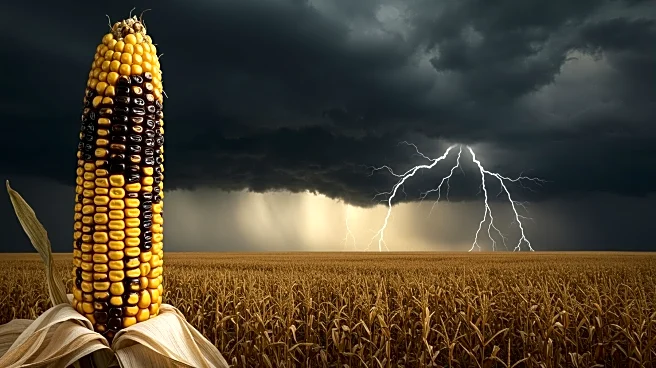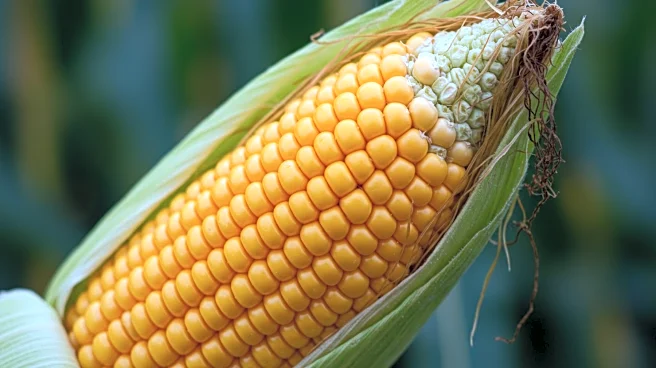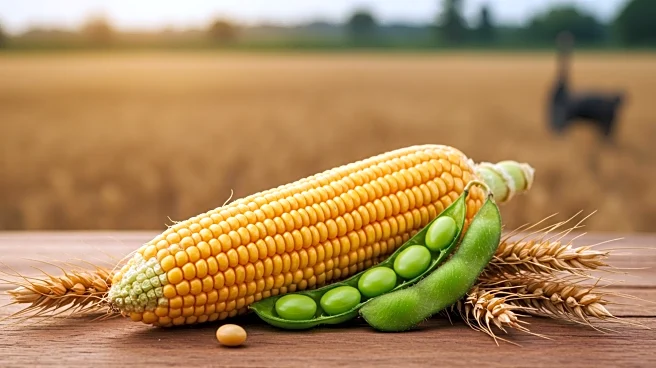What's Happening?
Tar spot, a fungal disease affecting corn, has been confirmed in 33 counties across Nebraska, according to the latest Crop Protection Network map. This marks an increase from 19 counties in mid-July. The disease, caused by the fungus Phyllachora maydis, forms black structures called stromata on corn leaves, which can also appear on leaf sheaths, husks, and tassels in severe cases. Nebraska Extension plant pathologist Tamra Jackson-Ziems noted that tar spot began early in Nebraska, with confirmations as early as the V6 corn stage. Southern rust, another corn disease, remains a significant threat, particularly in eastern Nebraska, and is transitioning to produce black teliospores, complicating differentiation from tar spot. Jackson-Ziems advises farmers to scout fields and consider fungicide treatments, especially if corn is at the early dough stage or earlier. Cool temperatures and high humidity favor tar spot development, and cases are expected to rise as cooler weather approaches.
Why It's Important?
The spread of tar spot in Nebraska poses a significant threat to corn yields, impacting farmers' economic stability and the broader agricultural industry. As corn is a major crop in Nebraska, the disease could lead to reduced harvests and financial losses for farmers. The presence of southern rust further complicates disease management, potentially increasing costs for fungicide treatments and field scouting. The situation underscores the importance of timely disease management and the need for effective agricultural practices to mitigate losses. The broader impact on the U.S. corn market could affect prices and supply chains, influencing food production and related industries.
What's Next?
Farmers are encouraged to scout their fields and assess stalk strength before harvest to prevent losses due to lodging. Fields with significant disease presence should be prioritized for early harvest. The National Weather Service Climate Prediction Center's temperature outlook suggests cooler temperatures, which may exacerbate tar spot cases. Continued monitoring and timely interventions will be crucial in managing the disease's impact on corn production.














